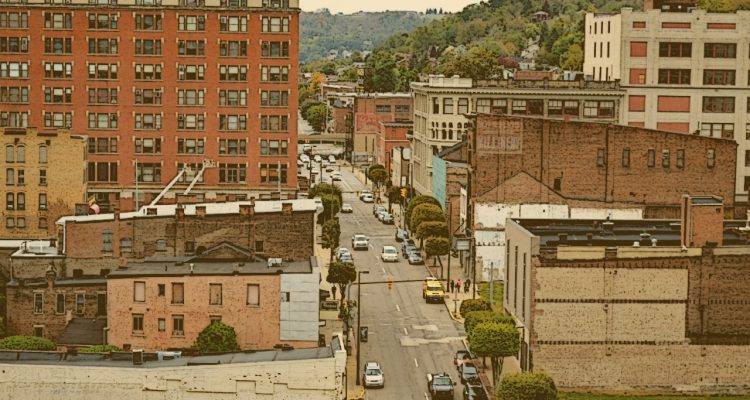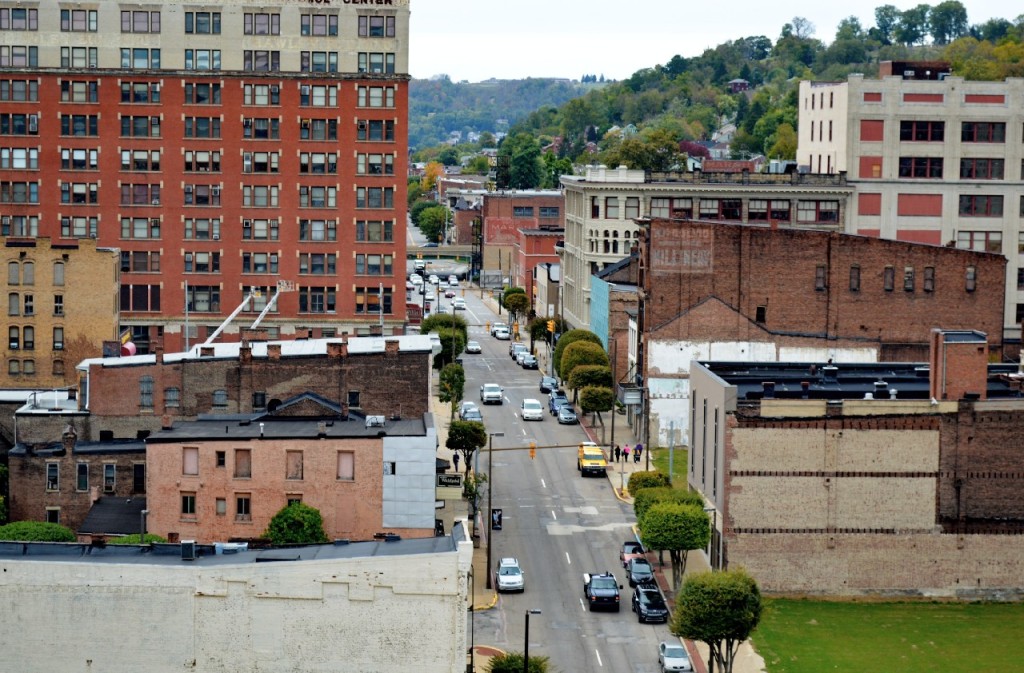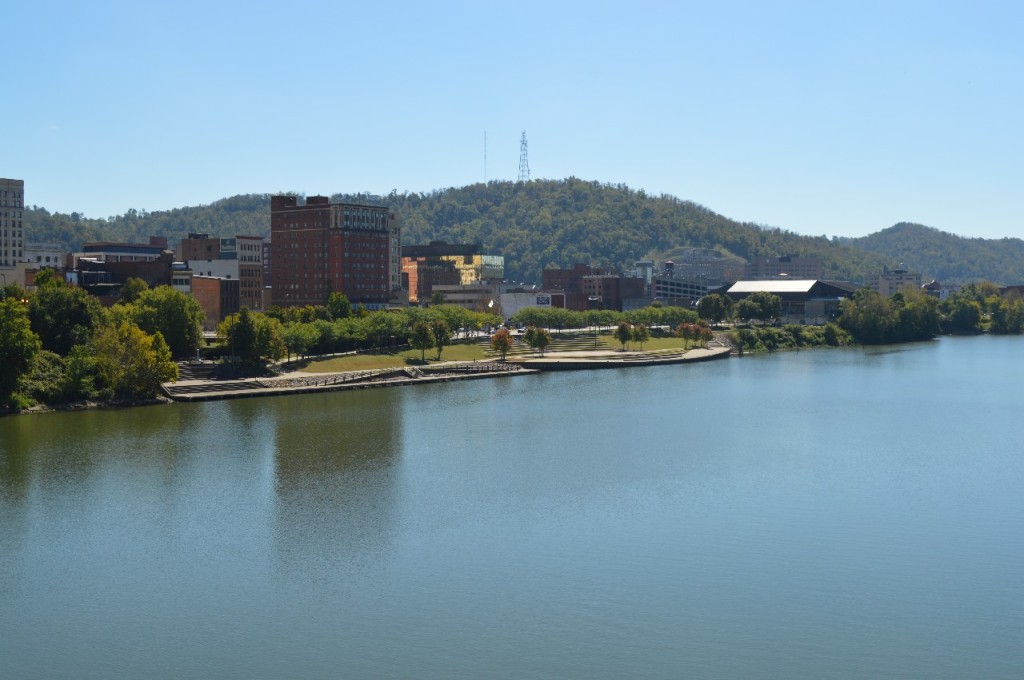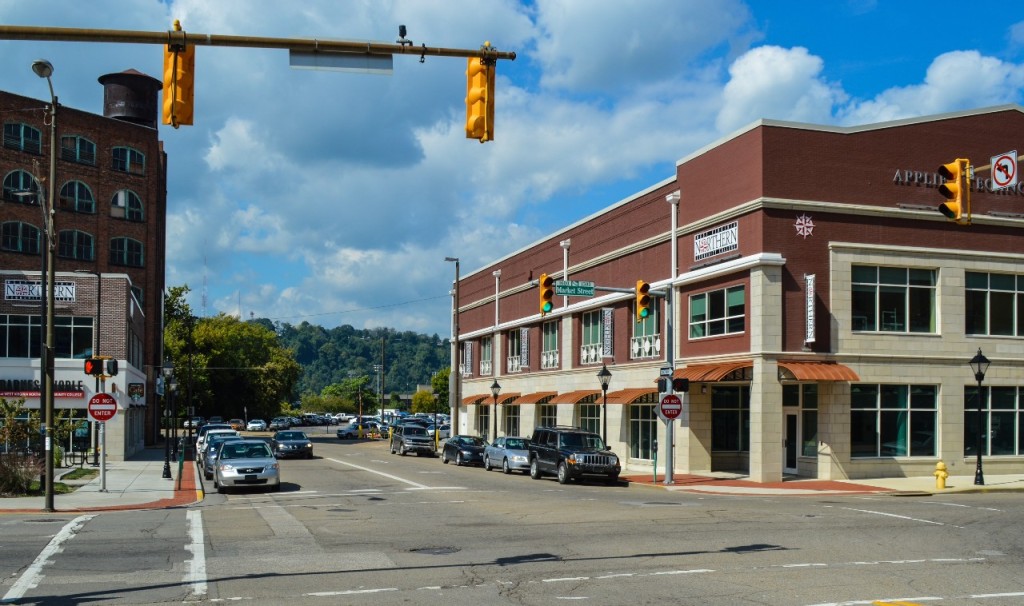By Steve Novotney
Weelunk.com
(Editor’s Note: This is the first in a series of articles that will include profiles on each of Wheeling’s established neighborhoods.)
G.C. Murphy. L.S. Good. Sears. Stone & Thomas. Becker’s Hardware. Elby’s Family Restaurant. Imperial Display. Peking Gardens.
Let’s get them all on the table.
Louis’ Hot Dog. Boury Inc. The 12th Street Grill. Crone’s. The Club Tower. Lanos & Krauss. National Record Mart. Kelly-Mike’s. Banov’s. Doc Williams. Dawson’s Meat Market.
The list of businesses that once operated in the downtown district of Wheeling is long, quite distinguished, and remembered well. Social media internet pages are dedicated to those memories, and the Friendly City is often criticized for the lack of retail businesses in downtown.
But many believe the tide will soon turn.
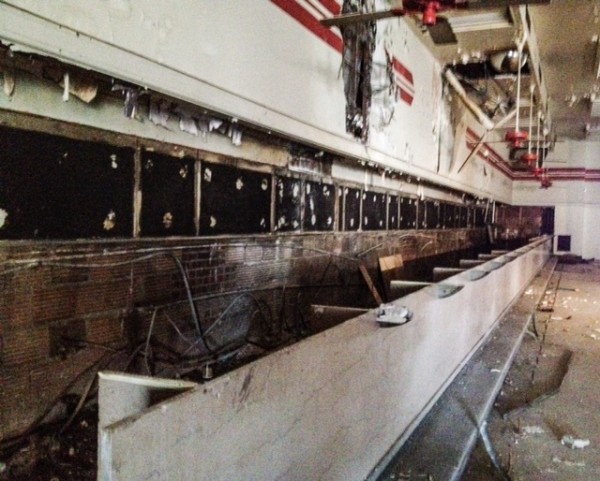
All of those memories could not stop the closures, one by one, to the point where the mecca that was once downtown Wheeling no longer resembles our localized version of Gotham. The downtown may never again resemble what it was to citizens between 1910 and 1980 because of the changes in consumer trends.
When downtown Wheeling was a retail hub, inner city shopping and living were considered normal. The development of malls and retail areas followed the invention of suburban living, and the convenience factor led the consumer away from Main and Market streets.
Downtown Wheeling has taken its hits. No longer do 450 employees fill the downtown’s tallest building while working for Wheeling-Pittsburgh Steel; the 1100 block has been cleared of seven decaying buildings; and McDonald’s closed down on the corner of 12th and Market streets back in the late 1990s.
Can there be a blacker eye?
“With the Ohio Valley Mall complex and The Highlands both well established, there is very little chance of downtown Wheeling ever being a major retail hub again,” said Glenn Elliott, owner of the Professional Building on Market Street. “But that doesn’t mean it cannot thrive. There is a hunger for a vibrant, hip, urban lifestyle in the Ohio Valley, and we have all the ingredients for building that right in downtown Wheeling.”
Many of the district’s assets remain and change is taking place. The Capitol Theatre, purchased by the Wheeling Convention and Visitor’s Bureau on April 3, 2009, has received more than $1 million worth of renovations.
“When you see a private non-profit destination marketing organization working with a federally funded preservation agency, and then the two agencies join forces with the city’s Sports and Entertainment Commission, amazing results can occur,” said Frank O’Brien, the CVB’s executive director. “I see similar partnerships being formed in the city involving government, private enterprise and the creative class.”
West Virginia Northern Community College transformed the corner of 16th and Market streets with the opening of its Applied Technology Center and; a Barnes & Noble Bookstore and student union. A reconstruction of the Market Street Plaza started in early October and is expected to be completed by the beginning of December.
“I really feel like downtown Wheeling is at a very important juncture in its history,” Elliott said. “With several decades of economic decline behind us, we are starting to see signs of life sprouting up here and there. We’re not out of the woods yet by any stretch, and we’re still searching for a downtown identity, but we really are overcoming our biggest obstacle: Perception.
“For the first time in a long while, there are a lot of people in this city who are thinking and talking about downtown in present and future tenses instead of reminiscing about how great it used to be,” he continued. “And that’s big. Nobody wants to live or invest in a downtown that used to be nice; people want to be a part of something that’s alive and growing.”
Wheeling City Manager Robert Herron is encouraged that organizations like ReInvent Wheeling have initiated a plethora of conversations concerning the needs and the hopes. Walkability, beautification, reuse of vacant buildings, more residential areas, and new businesses are all imperative discussions now taking place.
“I see groups like that one as an absolute positive for the city,” Herron said. “There is a younger group of people who are really interested in downtown Wheeling and moving downtown Wheeling forward, so we’re going to do anything we can to encourage their efforts.
“I have seen the ReInvent Wheeling campaign, and I think it’s excellent,” he continued. “The best part is it is possible, but there are a lot of variables that have to come together.”
Today, Stone & Thomas is now the Stones Center, home of Williams Lea and Wheeling Jesuit University’s doctorate physical therapy program. Boury Inc. is now DiCarlo’s Pizza. The Court Theatre is an attorney’s office and parking garage inside the Board of Trade Building. King’s Jewelry is a church.
The Victoria Theater no longer shows movies, but features an Elvis impersonator once per month. Wesbanco Arena, soon to undergo extensive interior and exterior renovations, continues to be the home of the Wheeling Nailers hockey club while hosting the annual Toughman Contest, the Home & Garden Show, several concerts and shows, and a circus twice per year.
Heritage Port replaced the Wharf Garage in 2001, and now hosts more than 70 events each year, including the Upper Ohio Valley Italian Heritage Festival, the Heritage Wheeling Blues Fest, and the Wheeling Vintage Raceboat Regatta.
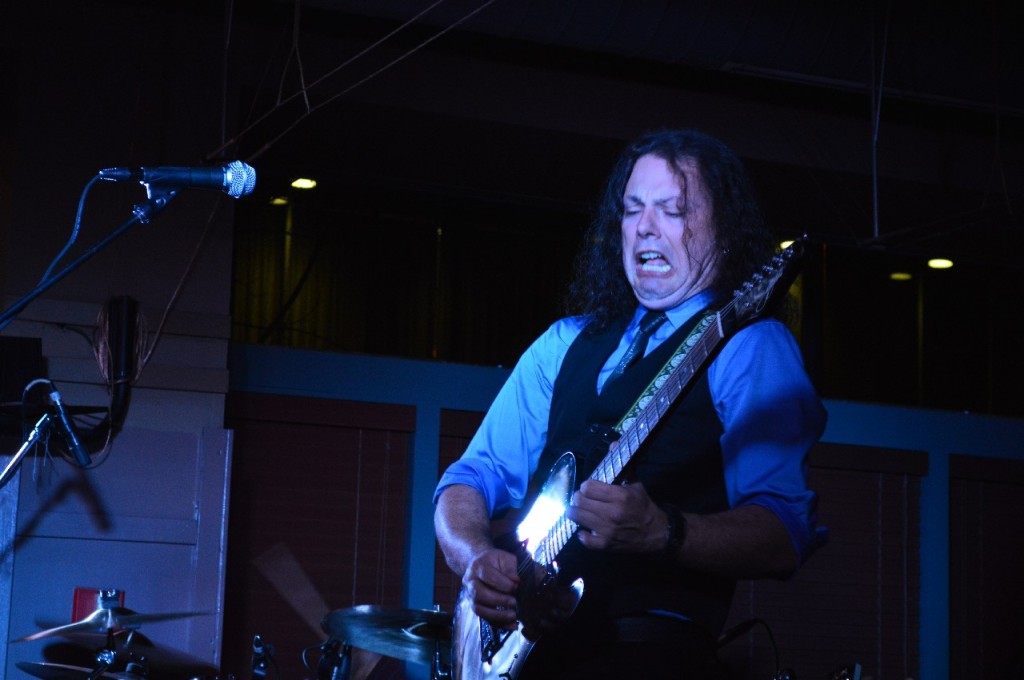
The city of Wheeling partnered five years ago with the CVB to implement the “First Fridays” event the first Friday of every month, and now more than 30 businesses located in downtown and Centre Wheeling participate by offering special pricing on featured items. ReInvent Wheeling has hosted “Show of Hands,” an event which promotes new business development and is sponsored by international law firm Orrick, Herrington & Sutcliffe.
“My feelings toward downtown Wheeling are more positive today than they have been in nearly 30 years,” said O’Brien. “The excitement comes from daily interaction with many community members who are committed to establishing a vibrant downtown through partnerships. The reopening and successful operation of the historic Capitol Theatre is an example of why I am so optimistic about the future of downtown Wheeling.”
But future business growth, most agree, hinges on residential statistics. An example, Herron said, involves the possibility of a grocery store opening within the downtown district.
“There are the demographics in the downtown right now that give us a little bit of a head start on attracting a grocery store, but we do need more people. It wouldn’t take a whole lot more people to where it would make sense to do it. More people would make it a home run, and that involves not the only the downtown but also North Wheeling and East Wheeling.”
Preservationists along with capitalists recently have purchased properties to the north, south, and east of the downtown district. But not all structures have been salvaged.
“We do have abandoned structures in every neighborhood in the city, but it is something we’ve acted on,” Herron said. “We’re looking at all the options, and that includes using revenues other than the federal (Community Development Block Grant) funding.”
Elliott admits he, too, is considering loft apartments for a few floors inside the Professional Building, a structure that has housed the Wheeling Stock Exchange, a bank, and various medical offices since opening in 1891. Currently, only the first floor of the building is occupied because of building and fire codes, but the owner has initiated a three-year plan which will result in total access.
“I think the biggest need we have in downtown right now is mid-to-upper-tier housing options for people who want to live in an urban environment. This is particularly important to the so-called millennial generation, but it’s also something that I think a lot of Baby Boomers who are tired of taking care of their lawns will consider as well,” he said. “We don’t have that downtown housing stock yet, but I am aware of at least two housing projects under serious consideration today. And I’m even considering residential options for the Professional Building.
“Simply put, more people living downtown will create a ready-made demand for more things to do downtown – more restaurants, more bars, more live entertainment, and so on.”
O’Brien peers into the downtown district’s future realistically, but he readily acknowledges more development has taken place in this section of the Friendly City in the past two years than since he first began working at a Wheeling radio station in 1986.
“Downtown Wheeling faces many challenges including empty lots, vacant buildings, a decreasing tax base and a lack of private investment. These challenges are insurmountable if the community looks to just one group for answers as has been done in the past,” he said. “Today, I see both young and older people with can-do attitudes and fresh ideas stepping up to form creative partnerships to improve the downtown area.
“While much of what I just said might sound like fantasy or wishful thinking,” O’Brien added, “there were naysayers who claimed saving the Capitol Theatre was an impossible dream.”


